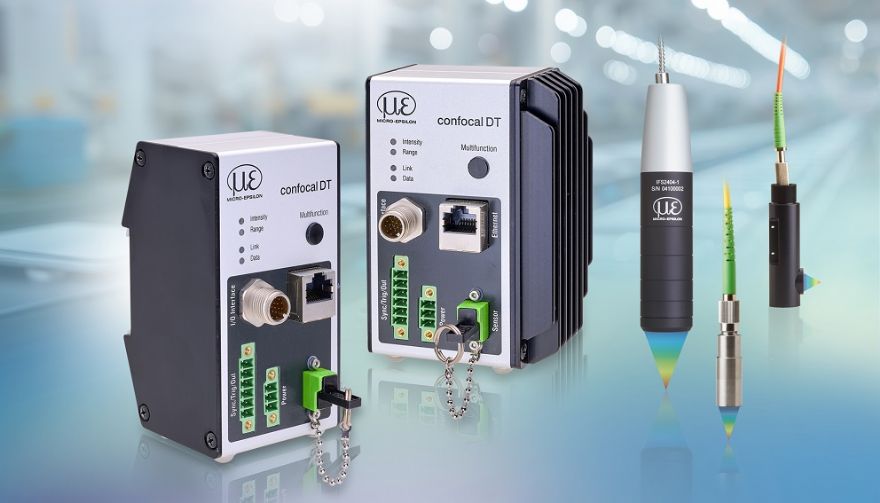
Precision sensor supplier
Micro-Epsilon has extended its ConfocalDT range of confocal chromatic measurement systems with two new compact confocal controllers that, compared with the prior system, offer even higher precision for non-contact distance and thickness measurements in industrial environments on almost all surfaces.
The company said: “Confocal chromatic sensor technology has become the preferred technology when laser sensors cannot achieve the measurement requirement. They offer significant advantages over laser sensors including the use of a white LED light source, which is much more stable than laser and has lower noise on reflective surfaces. They measure in direct axis and not in triangulation, so can measure against very shiny or even mirrored surfaces; as a result, confocal sensors do not suffer from shadowing when scanning over a surface or object — and they can measure on transparent and liquid surfaces without problems.”
The new ConfocalDT IFC2411 and 2416 confocal controllers, which are compatible with all confocal sensors in the Micro-Epsilon portfolio, feature modern interfaces that enable rapid integration into industrial machines and control systems. The ConfocalDT IFC2416 controller offers a measuring rate of up to 25 kHz, thanks to a high LED light intensity that enables precise, stable measurements at high speed. Its compact design makes it ideal for high-resolution (up to 2nm) distance and thickness measurements in almost all industrial sectors; and thanks to its multi-peak measurement function, even multi-layer thickness measurements (up to five layers) can be carried out on transparent objects.
Versatile controllerThe IFC2416 controller is also versatile: it is compatible with all Micro-Epsilon confocal sensors, so that the measuring range, base distance and special sensor properties such as vacuum suitability, measuring angle or beam path can be chosen as required.
The ConfocalDT IFC2411 controller delivers high-precision measurements at a resolution of 2nm and has an adjustable measuring rate of up to 8kHz; and with a wide range of interfaces — including a new Ethernet connection — the controller offers ‘maximum flexibility for integration into machines and systems’. Moreover, the housing is up to 300% smaller than comparable controllers and weighs just 335gm, enabling it to be mounted on a DIN rail in the smallest of control cabinets.
The introduction of the direct Ethernet interface completes the lineup of interface options available for the IFC2411 controller family. This includes fieldbus versions for EtherCAT, ProfiNET and Ethernet/IP, an RS422 serial interface, as well as an analogue output. Further integration possibilities include direct encoder input channels and trigger input options.